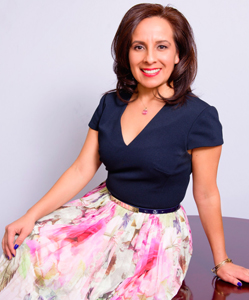How to begin Writing a Self Help or How to Book
Writing a self help or how to book is not as difficult as you may think. Most people believe that it’s an impossible task and that they could never achieve this, but this is usually because they are not sure how to start or begin such a venture.
The first step is to understand the elements that go into putting together a book of this kind. The elements (also listed in the introduction section) are listed once again for easy reference. As a recap, the basic elements to creating a book are:
- An idea
- An outline
- A great title and a book hook
- Logically organized chapters
- Examples and illustrations throughout the book
- Bullet Points
- Interactive elements such as checklists, quizzes, journaling, etc.
- Front matter; Title page, Introduction, Forward, Acknowledgement, Table of contents, Preface, Dedication, Permissions
- Back matter; Recommended Reading Lists, Appendix, Reference Section, Footnotes Section, Bibliographies, Indexes
- Permissions for substantial material and quotes from other sources
Having an Idea for your Book
The first step is to have a great idea or skill that you want to put into a book. Solicit input from your friends or family members on this idea and listen to their suggestions. Sometimes you may be too close to an idea and may not see all possibilities or roadblocks. Try and be as objective as possible to input. Once you decide on the idea, start by asking yourself some important questions using the How, why, when, where, what, and who questions. For instance, you may ask yourself:
- How do I get started on writing a self help or how to book?
- How can I make money writing self help and how to books, or can I make a difference in the world?
- How can I market my book?
- Why do I want to write this book?
- When do I have time to write this book?
- Where will I write this book and where will this type of book be useful?
- What topics do I want to cover in this book?
- Who is my target audience?
Having an Outline for your Book
The next step is to put together an outline for your book as this will be your roadmap to getting this project completed. Keep in mind that an outline can change direction and should serve as a guideline to get you started. It can also ensure you stay on target.
Begin with a general outline and then move towards a chapter-by-chapter detailed plan that can also be used when sending out proposals to publishers and agents. This detailed plan will be helpful for editors making decisions on your book and will allow them to work with other departments to better position this idea. Having a plan with such great detail can also be helpful to you as you begin writing your book. It will help organize your thoughts as well as allow you to see areas where your book may require more information or where it may be deficient.
There are many ways to outline, so choose a method that works best for you. Remember that your book outline can also serve as a great tool to constructing your Table of Contents.
Developing a Great Title for your Book
It’s important that you develop the right title and a great hook for your book. A book title should make a reader want to pick up your book and read it. It should be irresistible.
So how do you develop a good title? A title should reflect the topic of your book and the message you want to convey to readers. It should entice the reader to pick up the book, but most importantly it should offer hope. It could be hope to organize a messy garage, hope that a person may lose 20 pounds, or maybe even hope to visit Europe for the summer on less than $1,000 dollars. In your title, you must be able to capture whatever it is that you are selling to your audience. Without a good title, your book probably doesn’t have a chance.
Publishers, editors, and agents are all looking for that title that will captivate the readers, so carefully analyze the title you’ve chosen. Remember that a title should include the theme of your book, it should be informative, but it must also provide hope and promise and make a reader want to read your book.
Don’t forget that all your subtitles and chapter titles must also be based on the same methodology as these will be the page turners for your reader. It’s a tall order, but with some brainstorming it’s extremely doable.
Developing a Great Hook for your Proposal
Getting a publisher to read your book is sometimes difficult; however, as a writer you must do everything you can to get their attention in a professional way. A great start is to have a good hook so that an editor is enticed into wanting to read your proposal and wanting to see your book. Your hook should be written with a startling statistic that will grab attention, or by using a human condition that is remarkable or striking in some way. That is what is needed to make editors want to see your “stuff.” A book hook should grab the attention of an editor, an agent, or a publisher.
See other sections on how to structure your book for effectiveness.





